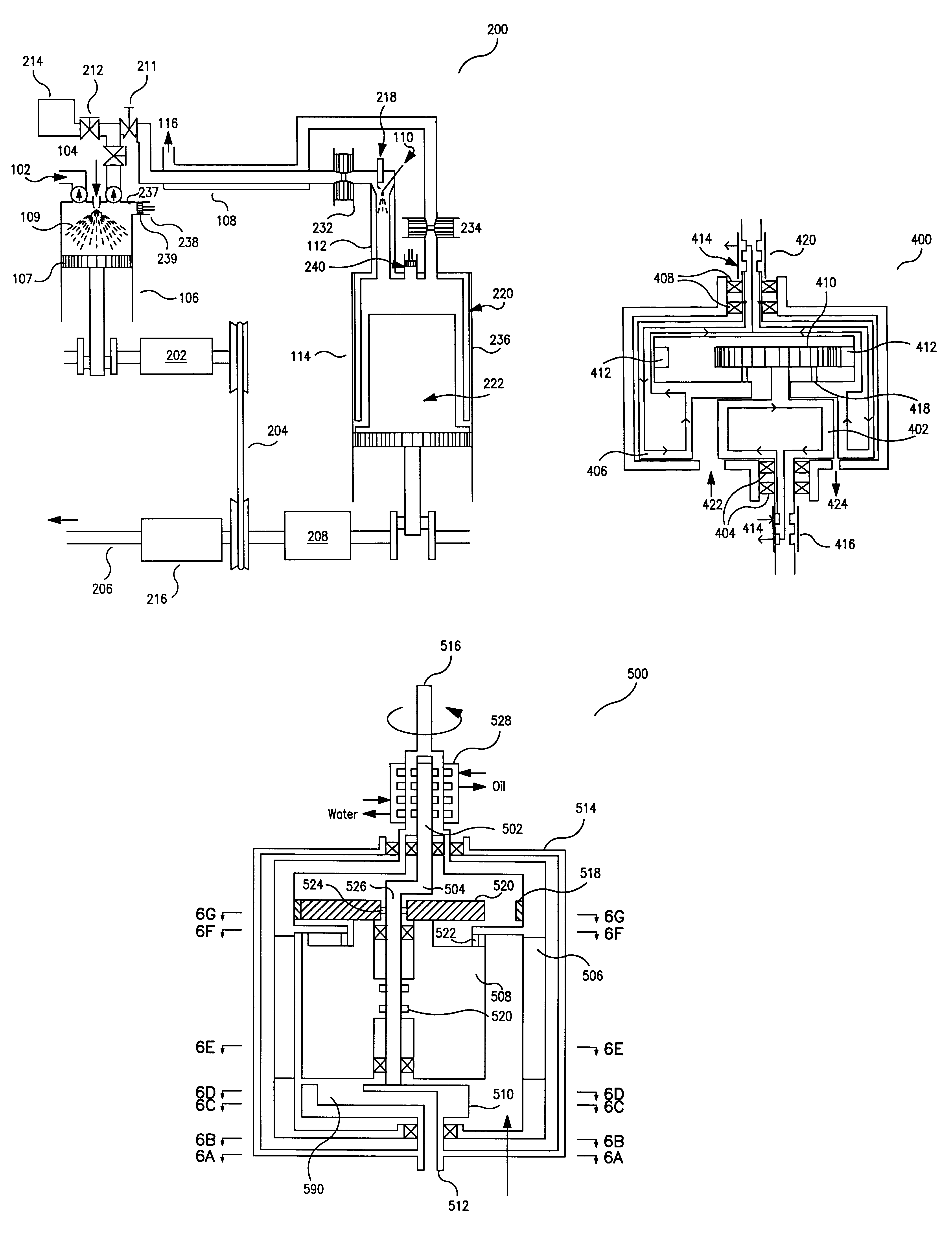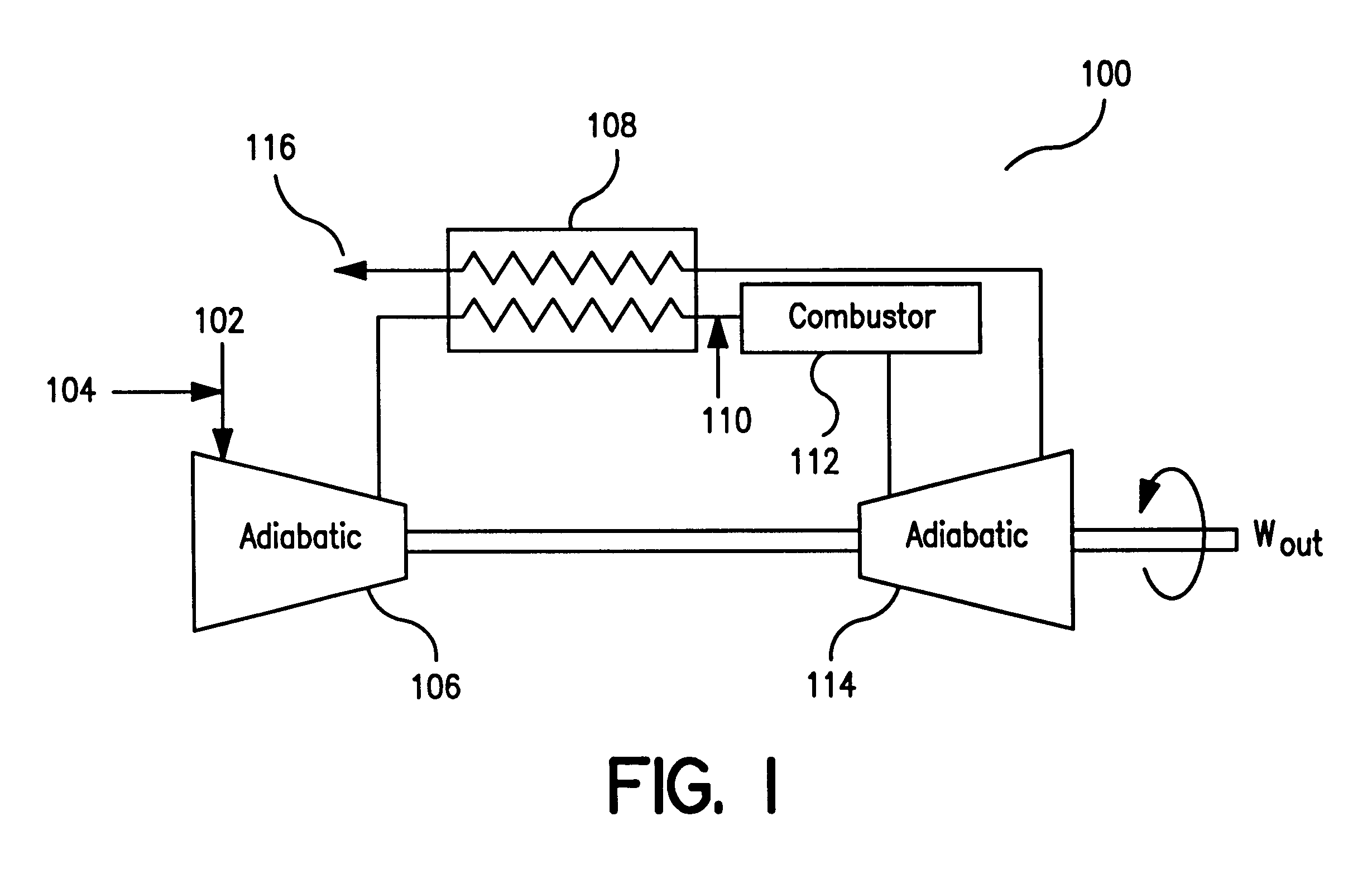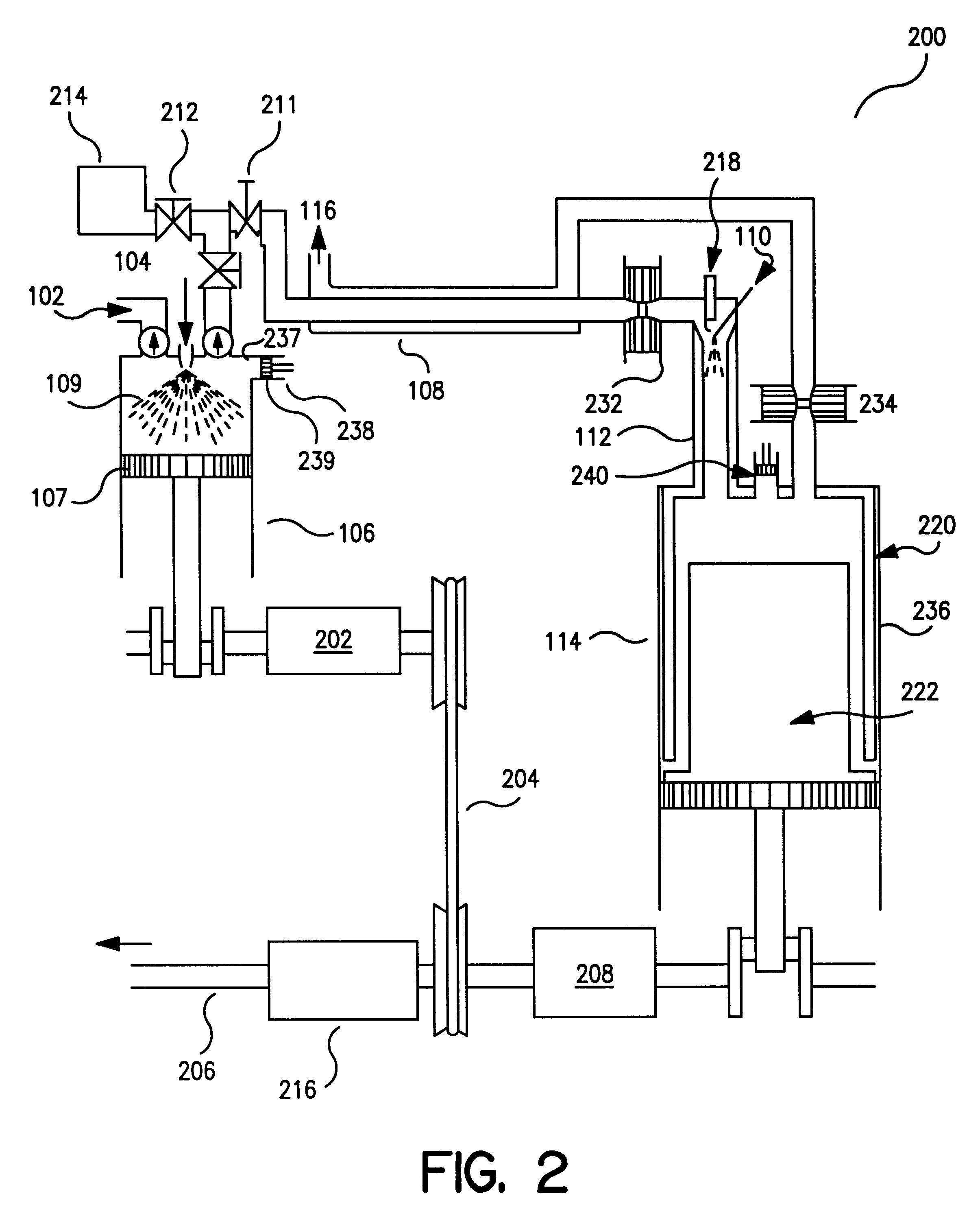Quasi-isothermal Brayton cycle engine
a brayton cycle, quasi-isothermal technology, applied in the direction of positive displacement liquid engines, special engines, liquid fuel engines, etc., can solve the problems of low power density, difficult to achieve perfect erickson cycles, and low efficiency of otto cycle engines
- Summary
- Abstract
- Description
- Claims
- Application Information
AI Technical Summary
Benefits of technology
Problems solved by technology
Method used
Image
Examples
Embodiment Construction
In order to facilitate a more complete understanding of the invention, an Example is provided below. However, the scope of the invention is not limited to specific embodiments disclosed in this Example, which is for purposes of illustration only.
Energy Efficiency
Table 1, below, summarizes the results of an efficiency analysis of an embodiment of the engine of the present invention. Three countercurrent heat exchangers were considered: stainless steel, high alloy and ceramic. Two approach temperatures were considered (50 and 100 K), both of which are easily achieved. Also, two compressor / expander efficiencies were considered: 0.7 and 0.8. (Note: compressor efficiency is calculated as the theoretical reversible power required assuming perfect water vaporization divided by the actual power required. Expander efficiency is calculated as the actual power production divided by the theoretical reversible power produced by an adiabatic expander). Depending upon the assumptions, the engine e...
PUM
 Login to View More
Login to View More Abstract
Description
Claims
Application Information
 Login to View More
Login to View More - R&D
- Intellectual Property
- Life Sciences
- Materials
- Tech Scout
- Unparalleled Data Quality
- Higher Quality Content
- 60% Fewer Hallucinations
Browse by: Latest US Patents, China's latest patents, Technical Efficacy Thesaurus, Application Domain, Technology Topic, Popular Technical Reports.
© 2025 PatSnap. All rights reserved.Legal|Privacy policy|Modern Slavery Act Transparency Statement|Sitemap|About US| Contact US: help@patsnap.com



